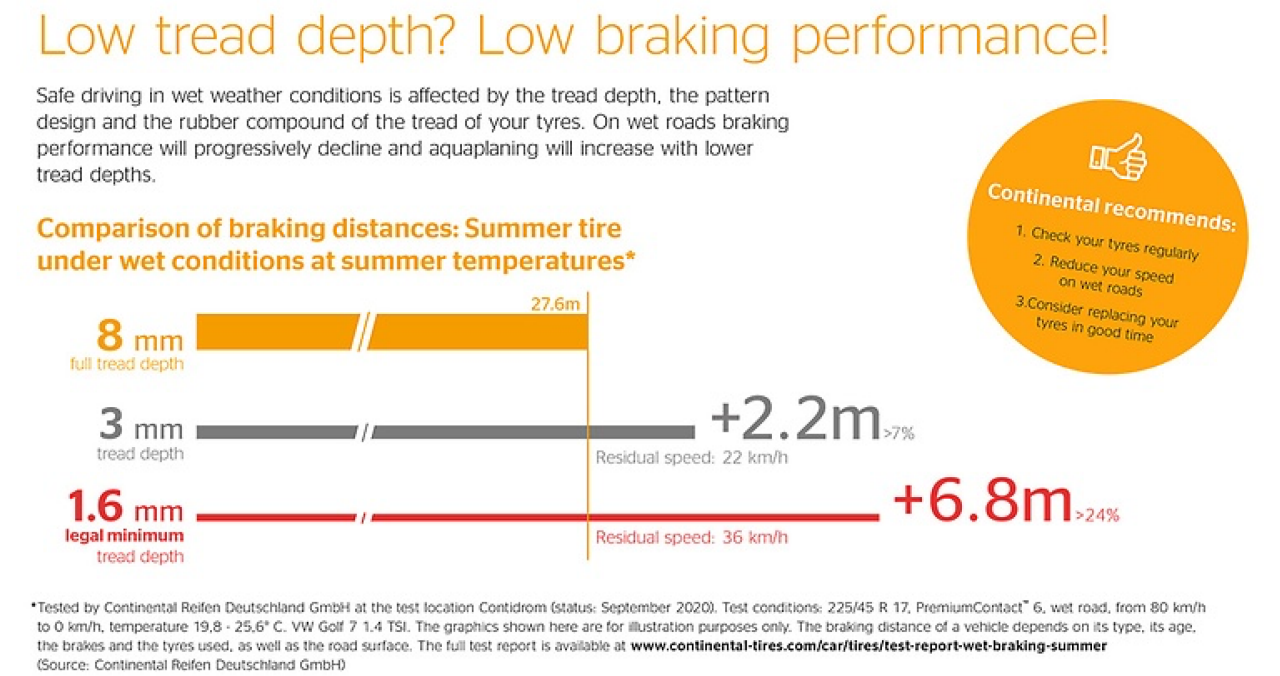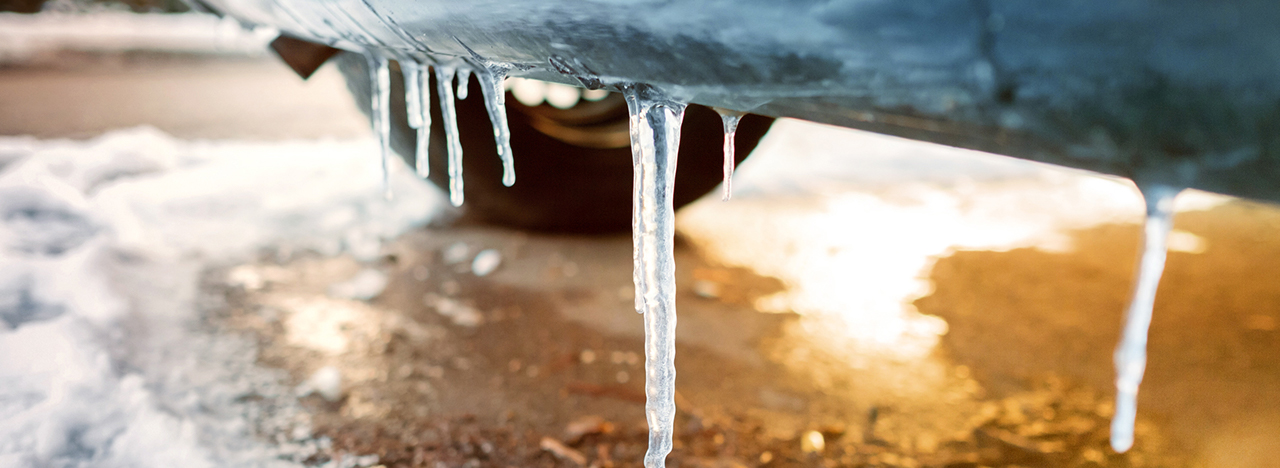
# Driving Situations
Aquaplaning
What is aquaplaning and how to avoid it?
Tires on public roads are legally required to have a tread pattern The primary job of the tread pattern is to expel water, which can affect the contact patch with the road in wet conditions, and to provide grip and traction.
When driving on wet roads at high speed, a wedge of water can build up between the tire and the road surface. The tire loses road contact, and the vehicle is no longer responsive to steering. This phenomenon is known as aquaplaning or hydroplaning.
If tires cannot grip the road properly during aquaplaning, this lack of traction has enormous consequences for car safety. The driver effectively loses control of the vehicle and is unable to brake, steer or accelerate.
Aquaplaning or hydroplaning is most likely to occur when there is a buildup of heavy rainfall on the surface of the road. It can also happen when the tarmac of the road is so uneven as to cause large puddles of standing water to collect.
There are several ways to reduce the chances of an aquaplaning accident with your car:
- Keep car tires inflated to the correct air pressure
- Monitor the tread depth, so it doesn't fall below the legal minimum of 1.6 mm
- Check your tires regularly and consider replacing your tires in good time
- Reduce speed in wet weather

Important to note is that sufficient tread depth is vital not just in extreme situations. Even at low speeds, there is a higher risk of having an accident or collision if the tires are worn down.
Renew at 1.6 mm tire tread depth
New tires are capable of dispersing up to 30 liters of water a second at 80 kilometers per hour. But the depth of the tire tread wears down over the course of regular usage. Consequently, tires disperse significantly less water as the depth of the tire tread decreases.
If car tires have only a tread depth of 1.6 mm for example, then water displacement is effectively and dramatically reduced.
If tires have a tread depth of 3 mm remaining, tires can still retain a high amount of their water displacement capability.
After this point, the risk of hydroplaning increases dramatically. In addition, a diminished tread also affects braking performance. The more worn the tread on a car’s tires becomes, the longer it takes to come to a complete stop, as test results show.

In a test performed at Continental’s test location Contidrom, the braking distance was increased by 6.8 meters on tires with the legal minimum tread depth of 1.6 mm, compared to the full thread depth of 8 mm. Tires with a 3 mm tread only took 2.2 meters longer to come to a full stop.
Tire tread depth indicators
Tires have tread across their entire circumference. Tread depth measurements must be taken -- for example using a Depth Gauge -- in the main grooves which feature Tread Wear Indicators (TWI) on modern tires.
In most European countries, the legal minimum tread depth for car safety is 1.6 mm; that's when tires are due for replacement.
To ensure that tires offer the best possible performance, check your tires regularly and consider replacing in good time. Furthermore, fit all four wheel positions with tires of the same tread pattern design. And at a minimum, each axle should have a pair of tires with the same tread depth.
To better help determine the remaining tread depth, Continental has fitted “wet indicators” between the grooves of the tire tread. These indicator ribs stand 3mm high, located between the tire tread blocks.
If the surrounding tread has worn down to the level of the indicators, then it's time to consider fitting the wheels with new tires as a preventative safety measure.

What to do in the event of aquaplaning
Whether your tires are new or old, drivers should always slow down on wet road surfaces to reduce the risk of aquaplaning.
If aquaplaning should occur – which is still possible depending on weather and road conditions that a driver cannot prevent – drivers are advised to immediately take their foot off the gas pedal and depress the clutch. Avoid moving the steering wheel or braking suddenly.
However, if there is a danger of a collision or severe accident, the emergency brake should be initiated at once. In most cases, the rear wheels will still have enough grip to slow the vehicle.
As soon as the tires are back in contact with the road and traction is regained, it should be safe to continue driving at reduced speed.
Related content
-
 2024/10/17To stay safe on curvy roads, you should avoid driving your car at excessive speed. Read on for more tips to smoothly navigate a long and winding road.Curvy ridesRead more
2024/10/17To stay safe on curvy roads, you should avoid driving your car at excessive speed. Read on for more tips to smoothly navigate a long and winding road.Curvy ridesRead more -
 2024/10/17When winter arrives, it's essential to take proper precautions for yourself and your vehicle. Here are some useful tips for safely driving in snow.Driving in snowRead more
2024/10/17When winter arrives, it's essential to take proper precautions for yourself and your vehicle. Here are some useful tips for safely driving in snow.Driving in snowRead more -
 2024/10/17If possible, don't drive in foggy conditions. Fog is a major cause of road accidents. But if it can't be avoided, here are some safe driving tips.Driving in fogRead more
2024/10/17If possible, don't drive in foggy conditions. Fog is a major cause of road accidents. But if it can't be avoided, here are some safe driving tips.Driving in fogRead more